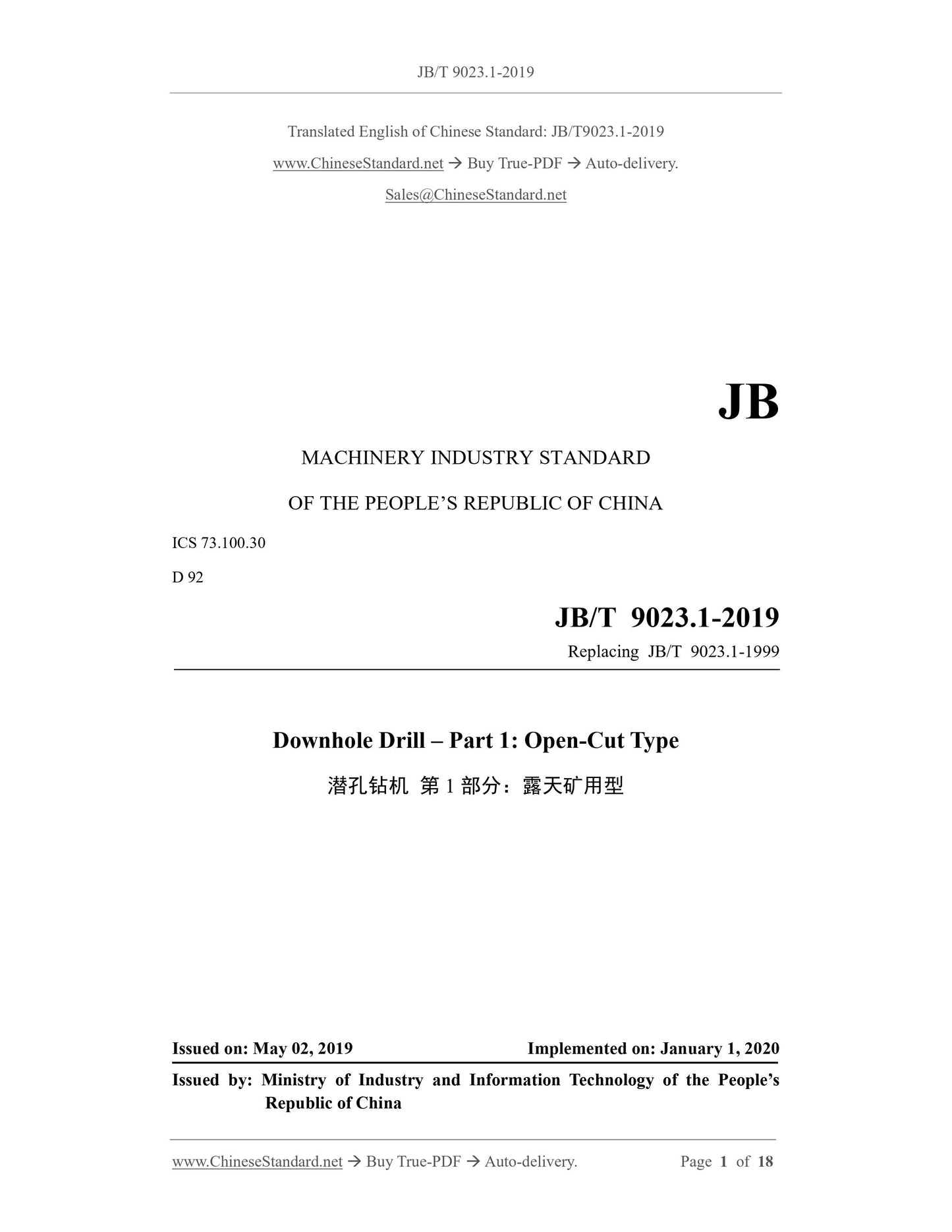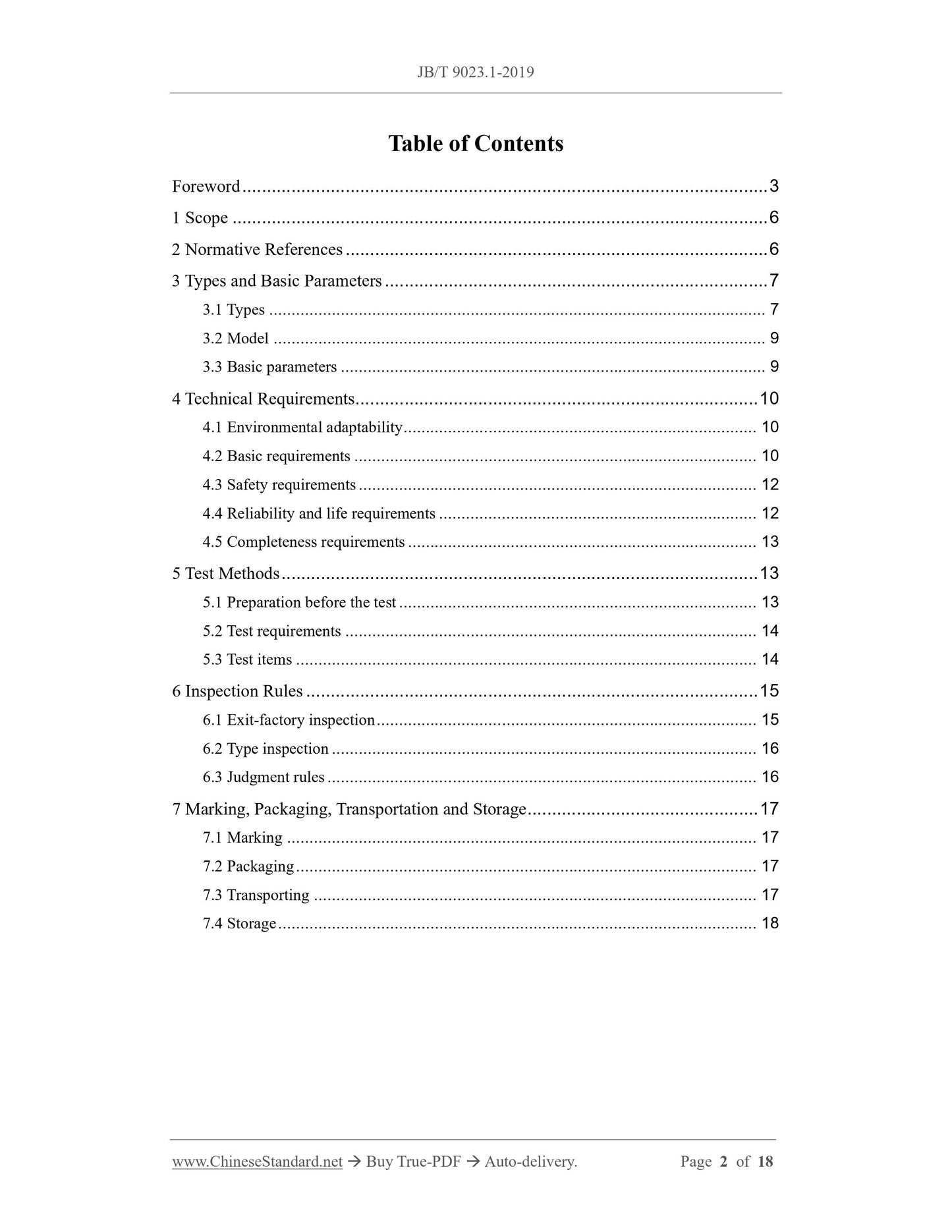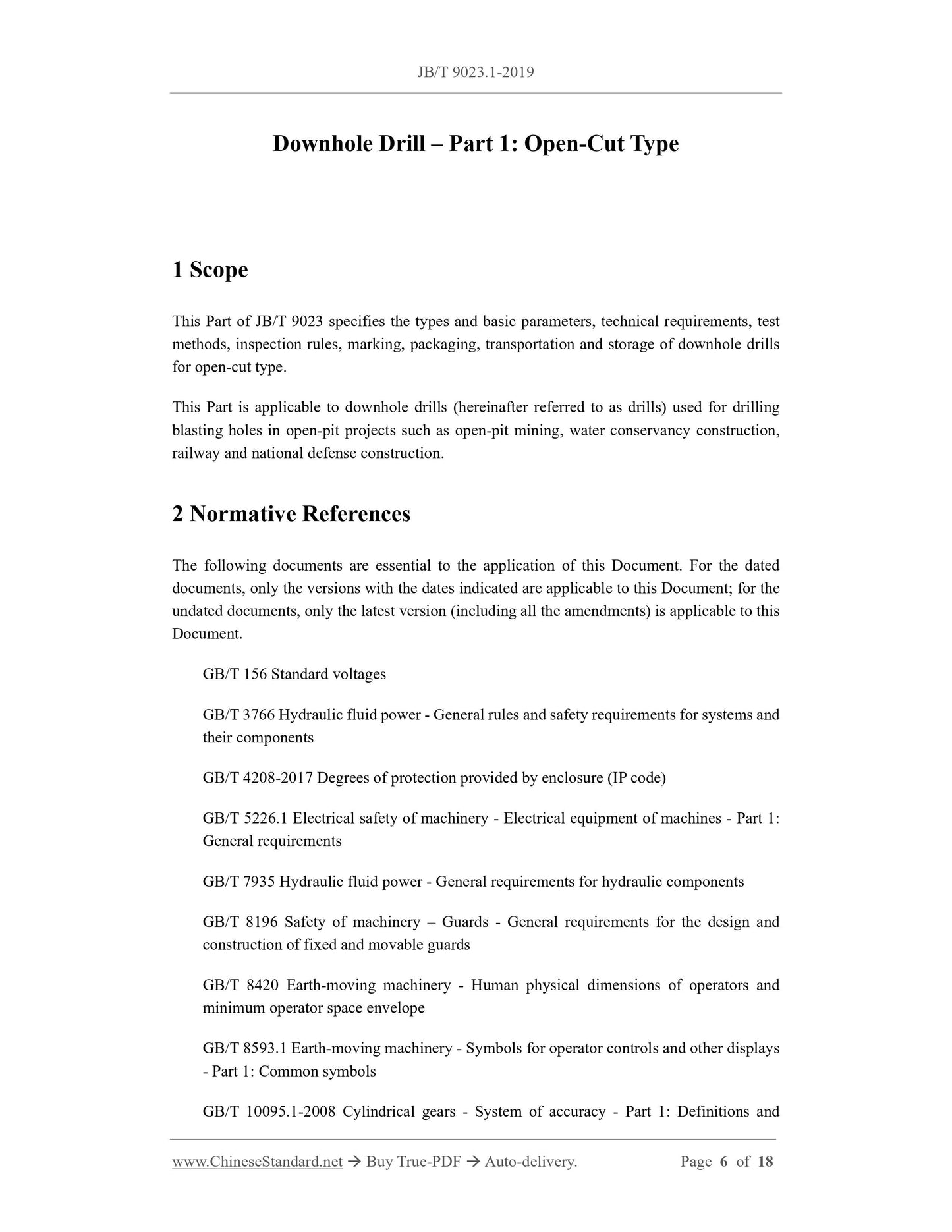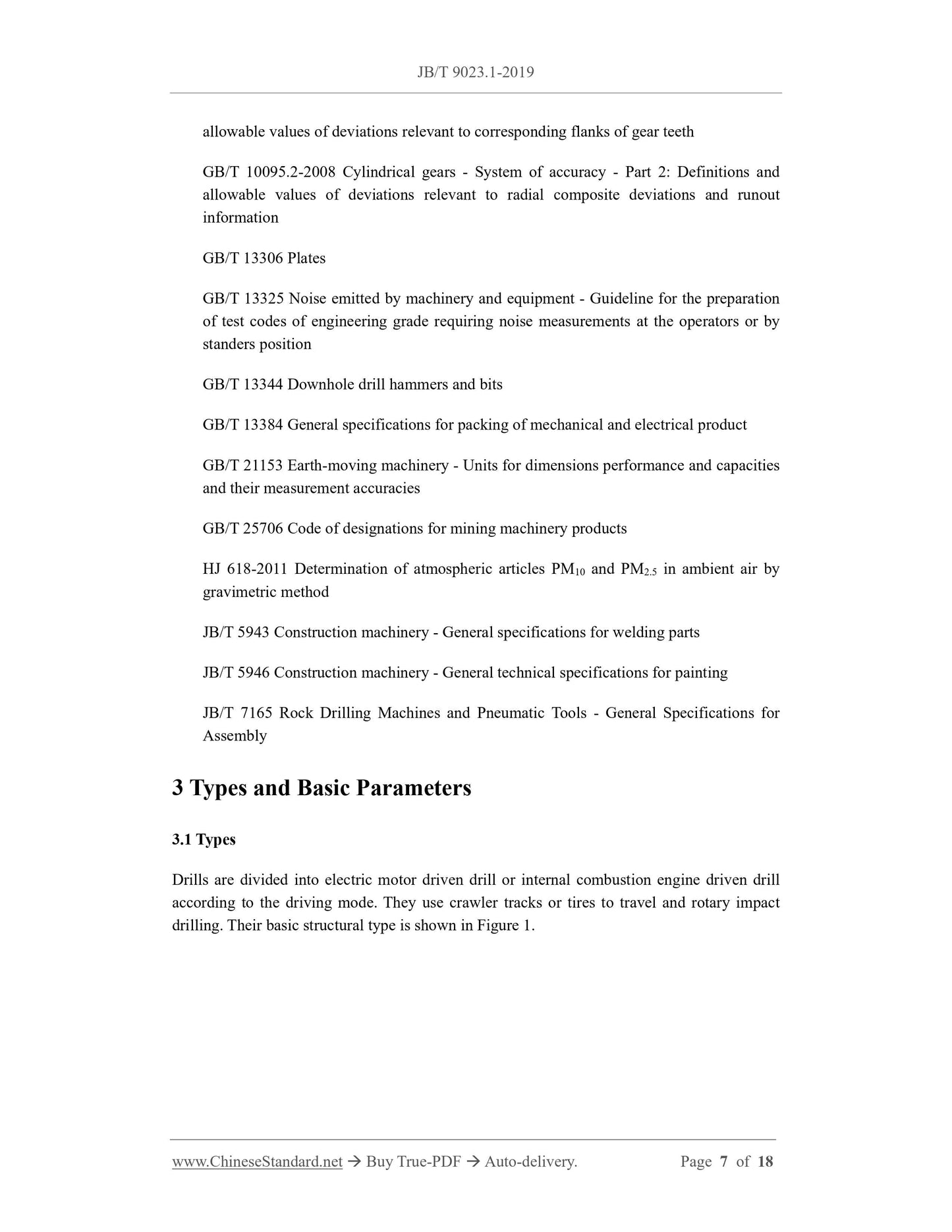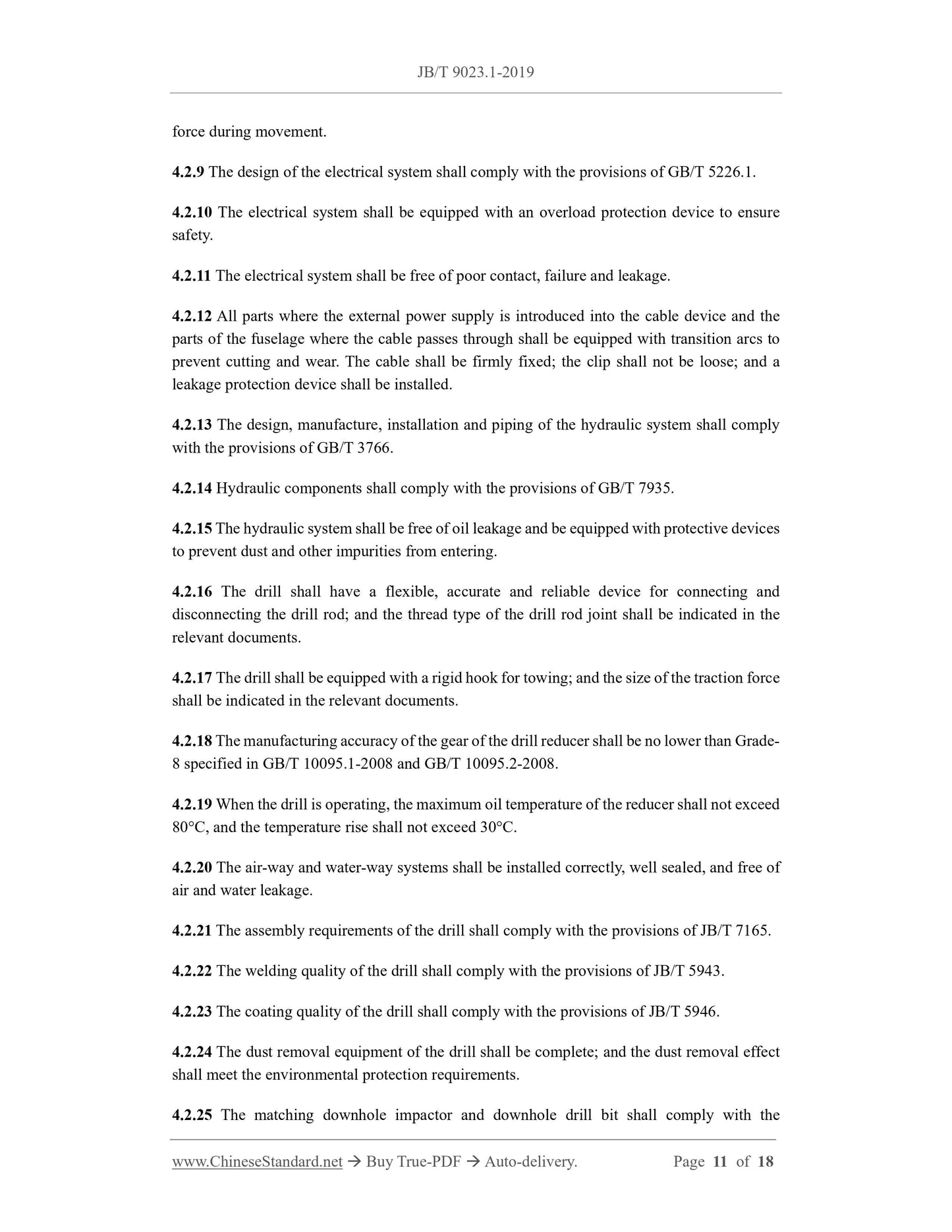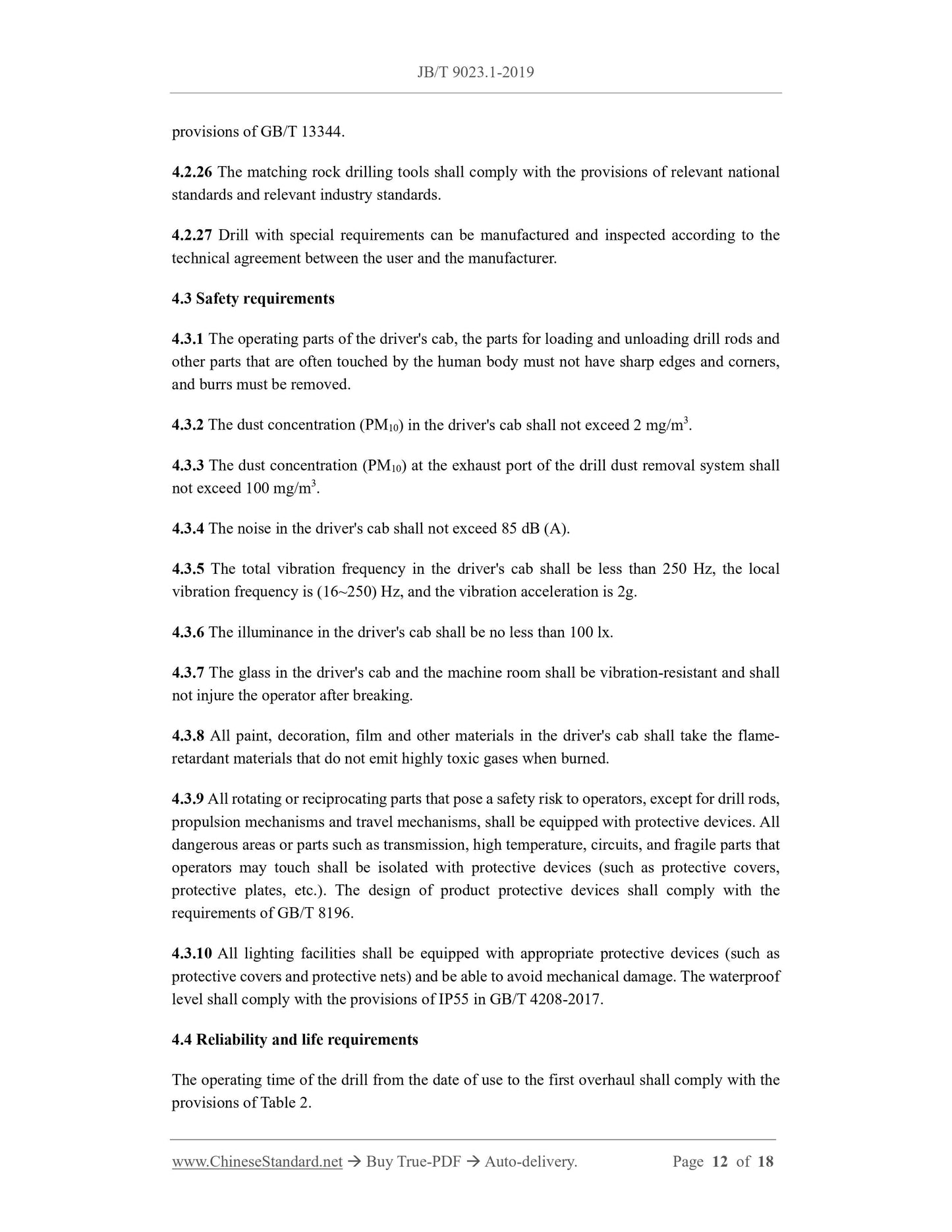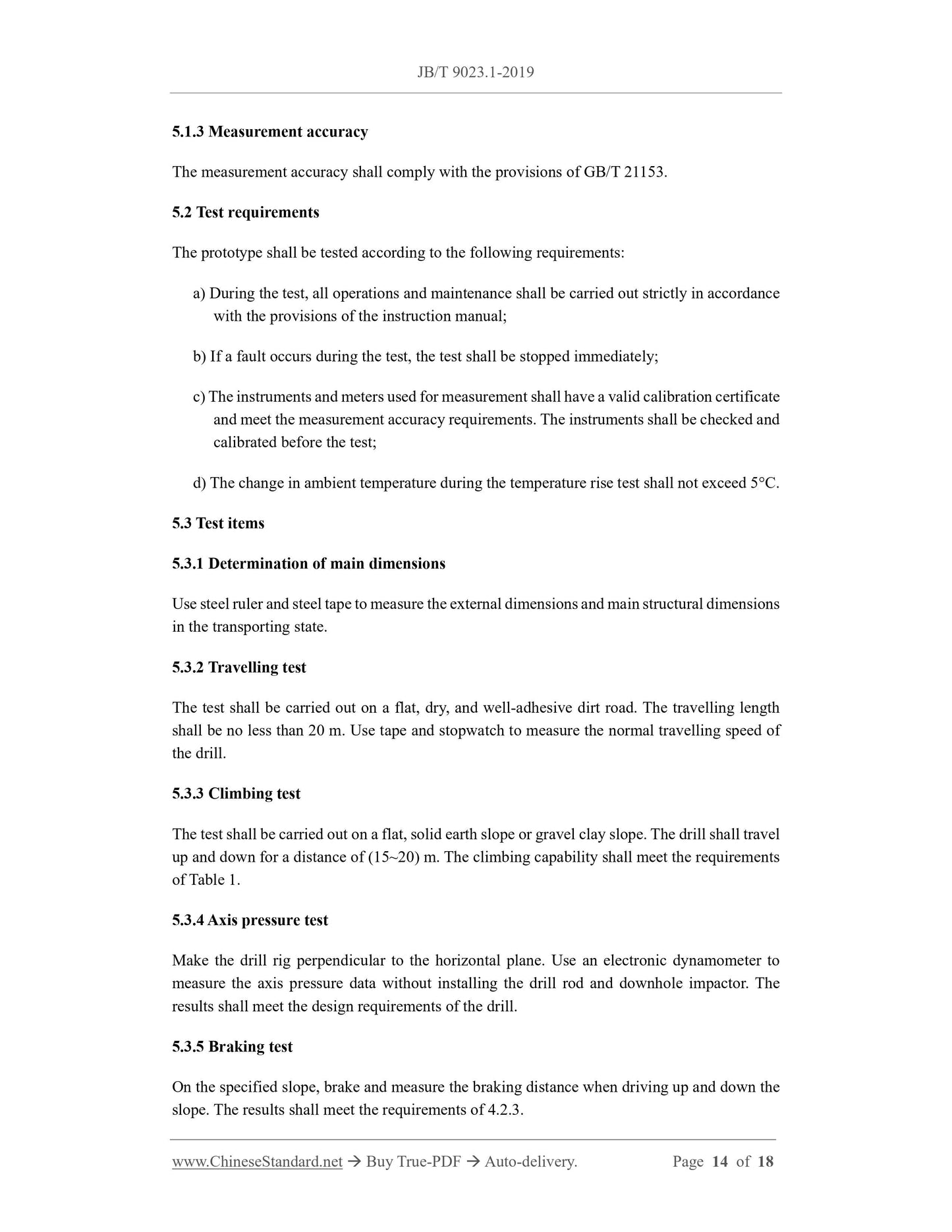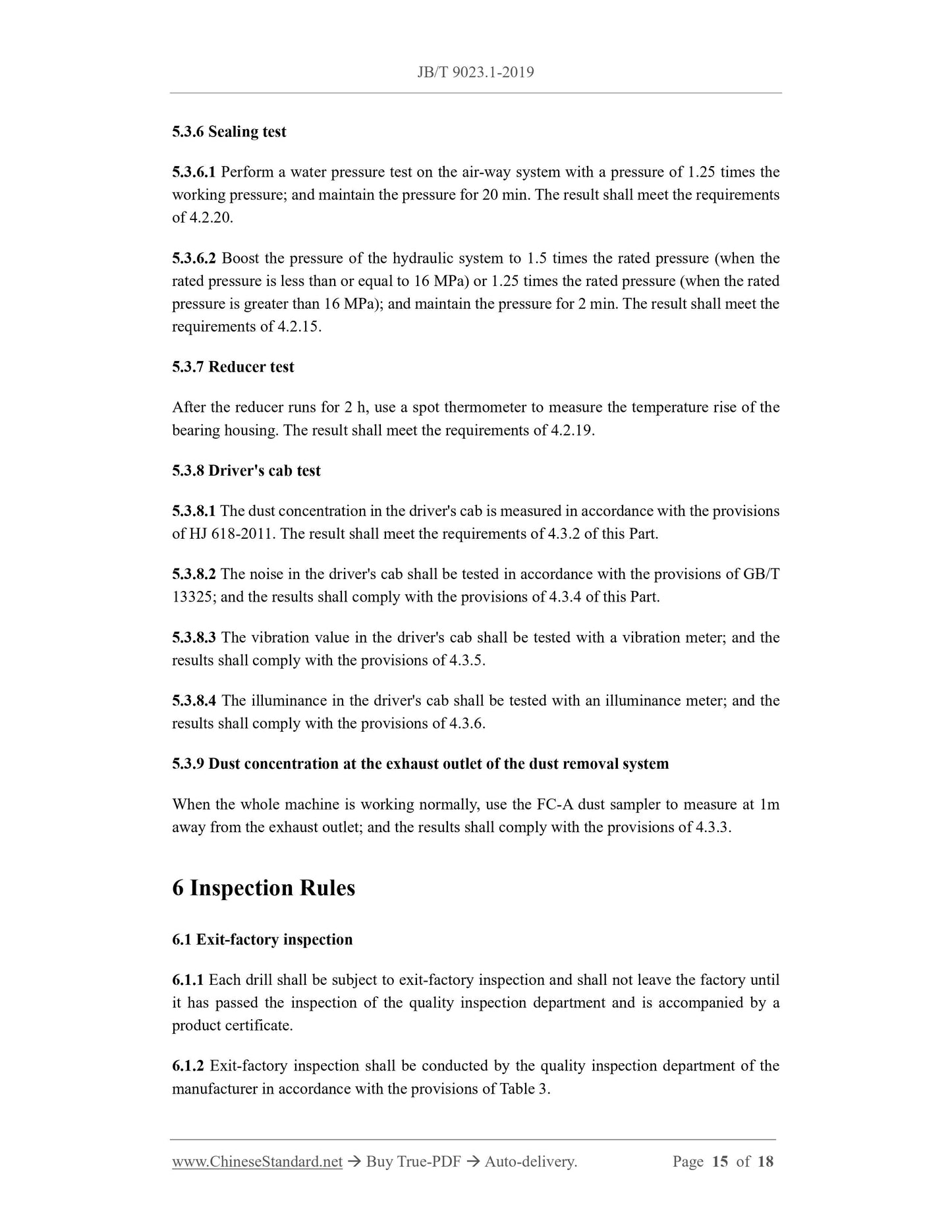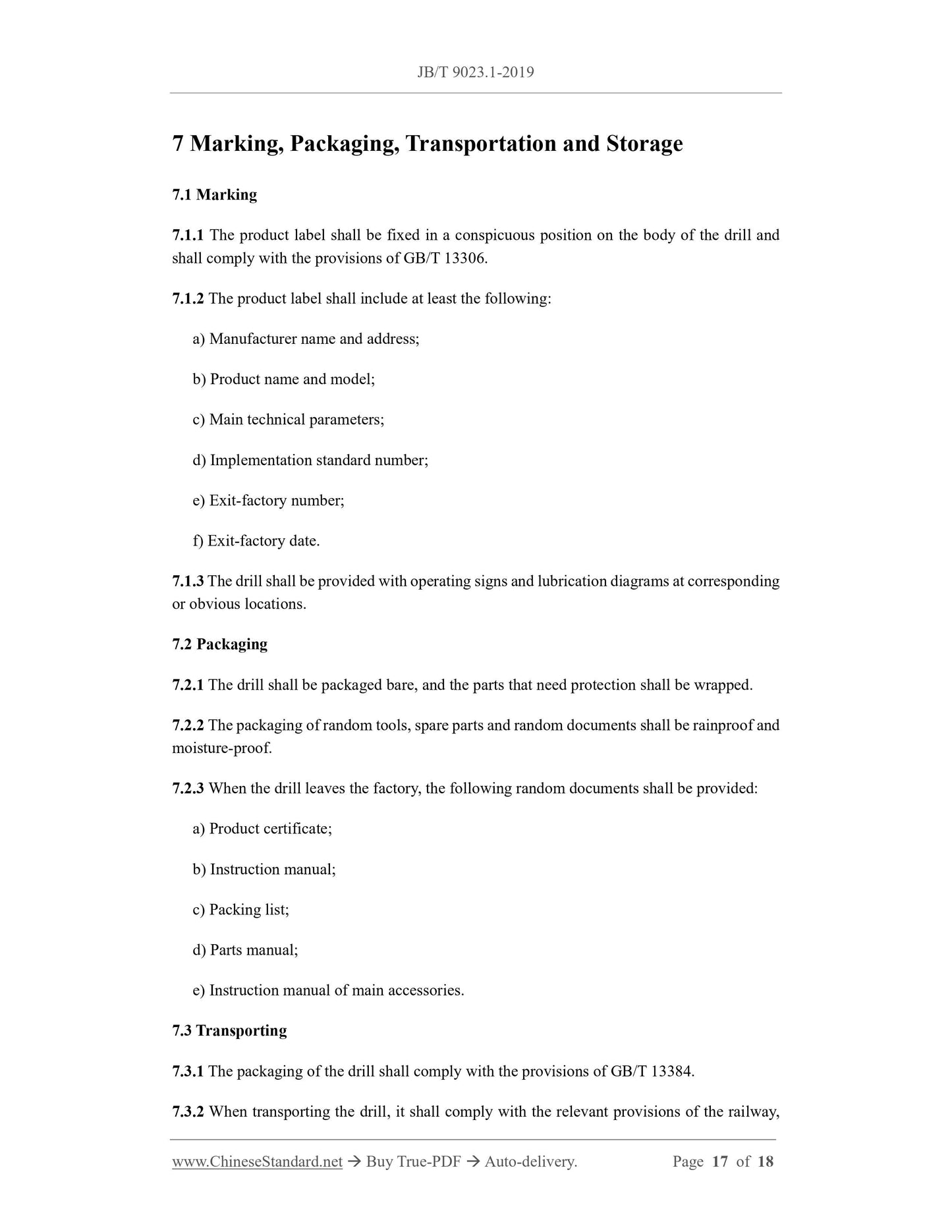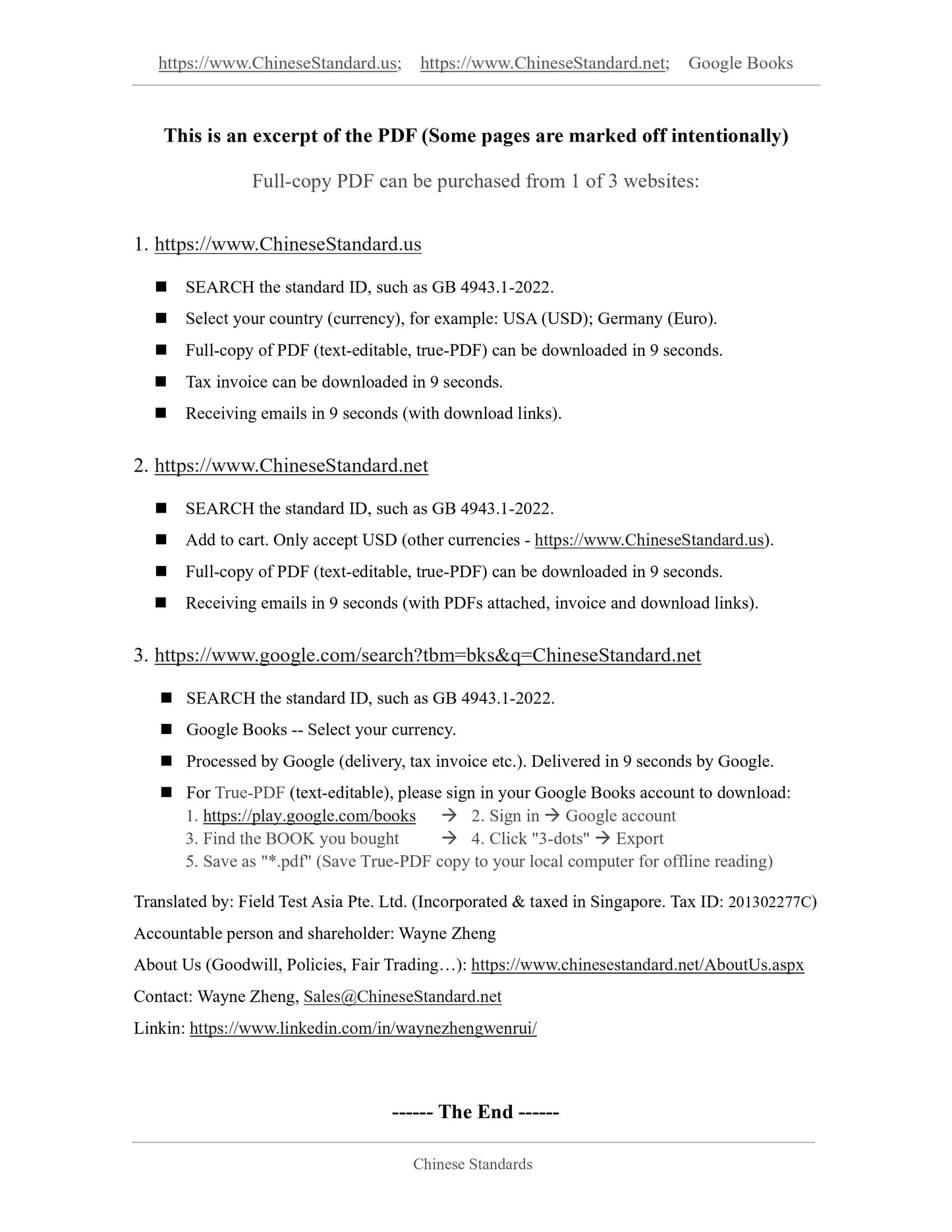1
/
of
10
www.ChineseStandard.us -- Field Test Asia Pte. Ltd.
JB/T 9023.1-2019 English PDF (JB/T9023.1-2019)
JB/T 9023.1-2019 English PDF (JB/T9023.1-2019)
Regular price
$205.00
Regular price
Sale price
$205.00
Unit price
/
per
Shipping calculated at checkout.
Couldn't load pickup availability
JB/T 9023.1-2019: Downhole Drill - Part 1: Open-Cut Type
Delivery: 9 seconds. Download (and Email) true-PDF + Invoice.Get Quotation: Click JB/T 9023.1-2019 (Self-service in 1-minute)
Newer / historical versions: JB/T 9023.1-2019
Preview True-PDF
Scope
This Part of JB/T 9023 specifies the types and basic parameters, technical requirements, testmethods, inspection rules, marking, packaging, transportation and storage of downhole drills
for open-cut type.
This Part is applicable to downhole drills (hereinafter referred to as drills) used for drilling
blasting holes in open-pit projects such as open-pit mining, water conservancy construction,
railway and national defense construction.
Basic Data
| Standard ID | JB/T 9023.1-2019 (JB/T9023.1-2019) |
| Description (Translated English) | Downhole Drill - Part 1: Open-Cut Type |
| Sector / Industry | Mechanical and Machinery Industry Standard (Recommended) |
| Classification of Chinese Standard | D92 |
| Word Count Estimation | 12,192 |
| Date of Issue | 2019-05-02 |
| Date of Implementation | 2020-01-01 |
| Older Standard (superseded by this standard) | JB/T 9023.1-1999 |
| Regulation (derived from) | Natural Resources Department Announcement No. 7 of 2019 |
| Issuing agency(ies) | Ministry of Industry and Information Technology |
Share
